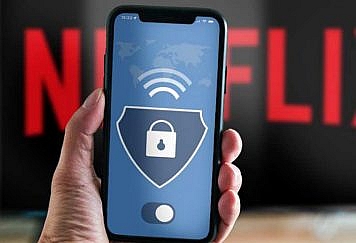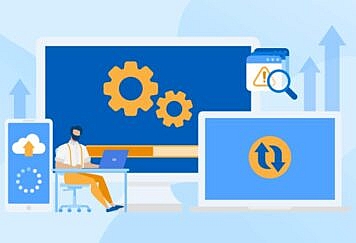Customers often switch between channels when they need help.
That’s why an omnichannel support software is no longer just nice to have; it’s a must for any business if you want to keep up with customer expectations.
Omnichannel isn’t just about being everywhere—it’s about creating a seamless experience, regardless of where or how a customer reaches out.
In a nutshell, omnichannel support means all hands on deck—social media, live chat, phone calls—all in sync. It’s making sure your customer support team can pick up any conversation right where it left off, even if it started somewhere else entirely.
With this kind of tech at your fingertips, you’ll be solving customer issues faster and boosting satisfaction scores like never before.
In this article, we’ll look at what makes omnichannel helpdesk solutions tick—from integration smarts across multiple platforms to personalized service that keeps existing customers coming back for more.
1. Integrating Communication Channels for Unified Support
Different people like different things – simple as that.
Some might opt for quick interactions through live chat while others favor detailed emails or personal phone conversations over shared inbox functionalities.
So your business must adapt to this diversity without losing sight of efficiency and personalized care.
Omnichannel software streamlines multiple streams into one easy-to-manage interface so agents can track previous interactions and incoming queries with ease.
Whether you’re running a small business or leading a large-scale operation, such technology lets your service hub thrive under pressure. It also makes sure no message slips through the cracks.
In order to keep up with high standards set by market leaders in customer satisfaction scores, you need to deliver great customer support for your startup in order to stay competitive.
These tools are designed not only to manage but also improve your team’s performance real-time. This means having capabilities like SLA management which ensures timely responses regardless of channel used.
Your efforts will pay off too because when consumers feel heard and helped quickly they are more likely to stay loyal.
In fact, according to research from Esteban Kolsky if complaints are resolved fast enough then up to 83% could remain faithful even after an issue arises.
2. Centralizing Customer Data for Enhanced Support
Imagine your customer support experience as a jigsaw puzzle.
So each piece is crucial customer data scattered across different platforms.
Without all the pieces connected, the bigger picture remains incomplete. This is where centralizing customer data steps in to transform omnichannel support.
The beauty of an omnichannel platform lies in its ability to consolidate communication from social media, live chat, phone calls, and email into one unified service hub. It’s like having a master key that unlocks access to every room of information about your customers’ preferences and history.
Gone are the days when team members had to toggle between multiple systems to track down previous interactions or manage incoming queries—now they can get everything they need from a single source.
It means faster responses and more personalized help which leads directly towards enhancing overall customer satisfaction scores.
Omnichannel software doesn’t just serve customers…
It actually empowers agents by reducing repetitive tasks through automation tools such as shared inbox management and SLA tracking features within the system itself—a real game-changer for small businesses especially during peak times or high volumes of inquiries.
3. Delivering Real-Time Interactions Across Platforms
Today’s customers don’t just hope for quick responses…
They expect real-time interactions.
So when a customer reaches out with an inquiry, whether it’s through social media or live chat, they want answers immediately. This is where omnichannel support software shines by enabling businesses to meet these demands across all platforms.
Omnichannel customer support takes the idea of multichannel help and amplifies it.
Instead of working in silos, channels are connected so that each interaction feels like a continuation rather than starting from scratch.
It means that whether a conversation begins on email and moves to phone calls or starts with live chat support before switching over to social media integration, your team has full context thanks to shared inbox functionality.
The power of this approach lies not only in connecting various forms of communication but also leveraging them for enhanced customer service experiences.
A seamless transition between modes—be it phone support, messaging apps, or any other medium—is essential for maintaining a high satisfaction score. The beauty here is two-fold: you cater to the preferred method at any given moment while reducing repetitive tasks that bog down agents’ time.
Real-time doesn’t just mean fast—it means smart,
4. Personalization at the Heart of Customer Support
Customers expect tailored experiences, so personalized support stands out as a game-changer if you are in a high competition industry.
With 76% indicating their preference for different channels depending on context, it’s clear that personalization isn’t just nice to have; it’s essential.
Omnichannel customer support software takes this challenge head-on by ensuring every interaction feels individual and relevant.
It doesn’t just streamline processes; it builds bridges between you and your customers.
Imagine a scenario where previous interactions inform present conversations—this is what exceptional omnichannel support platforms do best. They remember past purchases, preferences, even pain points so that each conversation continues seamlessly from the last one.
One standout feature of leading omnichannel solutions is their ability to offer real-time assistance across all touchpoints. Whether through social media integration or live chat functionality, these systems make sure help is always within reach when needed most.
Your customer service team will also appreciate how omnichannel software helps categorize frequently asked questions into a knowledge base.
With a knowledge base you can power self-service options like FAQs and automated responses to common inquiries—reducing repetitive tasks while boosting satisfaction scores among those who prefer quick fixes over waiting times.
5. Empowering Customers with Self-Service Options
Today’s savvy customers expect to solve issues on their own terms.
They prefer self-service options that give them the power to find answers without waiting in line for a customer service rep. This trend is not only about convenience; it’s about efficiency and satisfaction too.
Omnichannel support software steps up by offering robust self-service tools.
You’ll need these features, especially since they’re increasingly preferred by users who seek quick solutions independently. It’s no surprise, as these tools can significantly reduce the workload on your support team while enhancing overall customer effort scores.
Forrester research reveals that more than half of online consumers go straight to FAQs or help sections before calling or emailing for help.
So when your customer has an urgent question outside business hours—what do they do? With omnichannel software like Glassix, night owls get their answers through easy-to-navigate knowledge bases or AI-driven chat functionality.
An intuitive self-service hub means fewer repetitive tasks bogging down your agents and more time spent on complex inquiries that truly need human touchpoints.
Omnichannel platforms blend various mediums seamlessly so whether someone starts solving a problem via social media integration then jumps over to live chat support—the experience remains fluid and frustration-free.
The bottom line is clear: providing exceptional customer experiences matters now more than ever because satisfied customers become loyal ones—and loyalty translates directly into revenue growth for small businesses aiming high.
Conclusion
How should you proceed then?
Embrace the features of an omnichannel support software, and you embrace the future.
If you are just getting started with your business, these tools are your bridge to customer satisfaction, loyalty, and service that feels effortless.
You’ve seen how crucial it is to offer real-time help across all channels. It’s what customers expect today. They want quick fixes from live chat on social media to phone calls.
Remember this: centralizing data makes for smarter support; integrating platforms leads to seamless experiences; offering self-service options empowers your users.
Invest in these capabilities, watch your team thrive, and serve customers with confidence.
Here’s to your success with customer support.
Follow TechStrange for more Technology, Business and Digital Marketing News.





